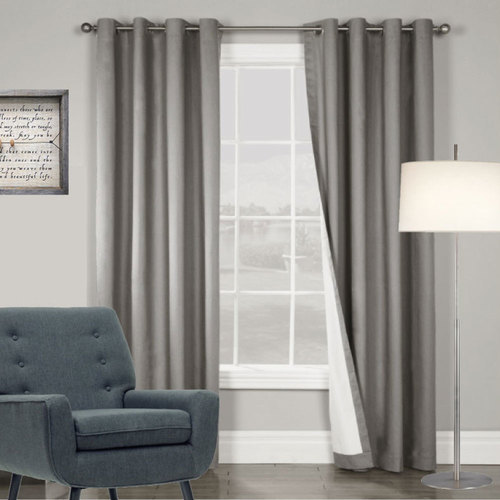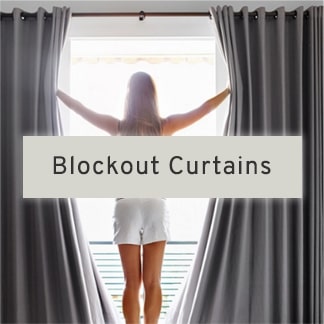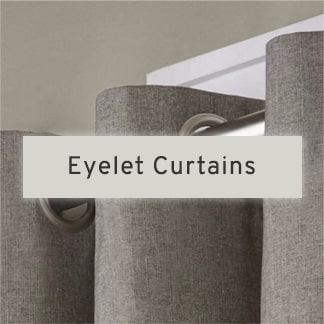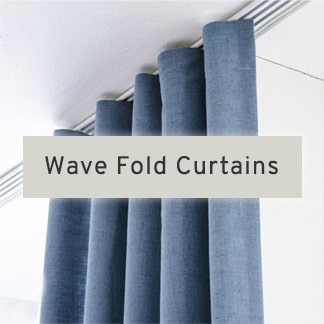Simple Repairs That Can Save Your Custom Made Curtains, Part 1
Posted by Emily Wang on 6th Apr 2023
Purchasing custom-made curtains is a great investment in your home. When you can dictate the size, style, and colour of your curtains, it's going to make your final window treatments look more polished and put together. When you make that purchase, though, you expect your investment to last for a long time. We've received many compliments from our customers about the durability of our made-to-measure curtains. They are pleased with the quality of the fabric, especially for the price they paid, and are thrilled when their curtains look as good as new year after year.
Of course, sometimes accidents happen. In a busy household, it's going to be difficult to keep your curtains completely free from damage when they are hanging in your windows for as long as a decade or more. Pets can get their claws stuck in them, they could get caught in the window frame, the weather might do some damage, or even simply human error like spilling a cup of coffee could end up damaging your new curtains. Thankfully, though, when you start out with high-quality curtains, they'll be easy to repair.
If you have recently experienced damage to your curtains, don't despair! With a few minutes of work, there is a good chance you can have your curtains looking as good as new again. Here is our guide to quick and common repairs to help extend the life of your Quickfit Curtains.
Quick Repairs for High-Quality Curtains
How to Repair a Tear in the Fabric
Curtains are typically pretty difficult to tear, but it does happen. Thankfully, the work required to hide a tear is minimal and you should be able to easily mask the work. You have a few options for repairing your tear, depending on the location and which one you feel more comfortable doing. Here are our two favourite methods.
1. Grab your needle and thread. Using an upholstery needle and coordinating thread, start by matching up the sides of the tear. Next, use a whip stitch to bring the two sides together, being careful to match up any patterns or designs as you sew. When you reach the end of the tear, take an extra stitch, tie off the thread, and trim off the excess thread. Depending on the size and location of the tear, the repair may be visible when up close but should be easily disguised by the fullness of your curtains when you step back.
2. Head to your local sewing shop and purchase fusible interfacing. This is a kind of iron-on backing for fabric. You'll cut a piece of the interfacing that's slightly larger than the tear. Position it on the backside of the curtain, carefully lining up the fabric so that the tear is as closely patched together as possible. You may want to pin the curtain in place on your ironing board to ensure it doesn't move during the repair work. Then, place the interfacing face down on the back of the curtain and run your iron over it to fuse it to the fabric. This will hold the fabric together and prevent the tear from becoming any larger. Make sure you follow the manufacturer's instructions in the fusible interfacing for best results.
How to Repair a Snag in the Fabric
Whether they get caught on your clothing, the pet's paws, or even the wood around your windows, your curtains probably have a snag or two. Snags in curtains are more common than tears, but thankfully, a couple snags aren't going to ruin the function of your curtains. They could be, however, fairly unsightly and you may wish to repair them. Snags can be slightly trickier to repair than tears, depending on the type of fabric and the severity of the snag.
1. Start by gently manipulating the fabric to try to decrease the size of the snag as much as possible. A snag is caused when a thread is pulled out of it's normal position; in many cases, you can decrease the size of the snag by helping move the thread back into the proper position. Gently pull the fabric around the snag, stretching it out slowly. Be careful not to pull too hard or to yank on the snagged thread itself, as you run the risk of making the snag bigger or creating a hole.
2. Once you've stretched the fabric as much as possible, you can prevent the snag from becoming worse with a thread and needle. Use thread that's as closely matched to the colour of your curtains as possible. Then, attach your thread to the loop of the snag. Gently bring the snag through to the other side of the curtain, using your needle and making a stitch as close to the root of the snag as possible. Once the snag is on the other side, it should be at less risk to tear further. You can snip your thread, but don't snip the snag itself.
Never try to "fix" the snag by trimming the threads themselves. This will cause the threads to unravel from within the weaving, creating a hole and a much bigger problem. If you don't want to repair the snag using the methods listed above, it's best to simply leave it alone. There is less risk of it causing a problem in the future that way.
Remember, starting with high-quality curtains means it will be easier to repair and maintain your curtains so they look like new for a long time to come. We'll share more of our curtain repair tips and tricks in our next blog, where we'll also share a lot of information that's great for pet owners. Our team will help you make sure your curtains are looking their best even years in the future!
Looking for made-to-measure curtains for your windows? Quickfit has them. Place an order on our website and we'll have your new curtains on their way to you right away! We offer a huge selection of custom curtains in the size, style, and colour that you need for your home or office. Start shopping our online selection and place an order with us today!














